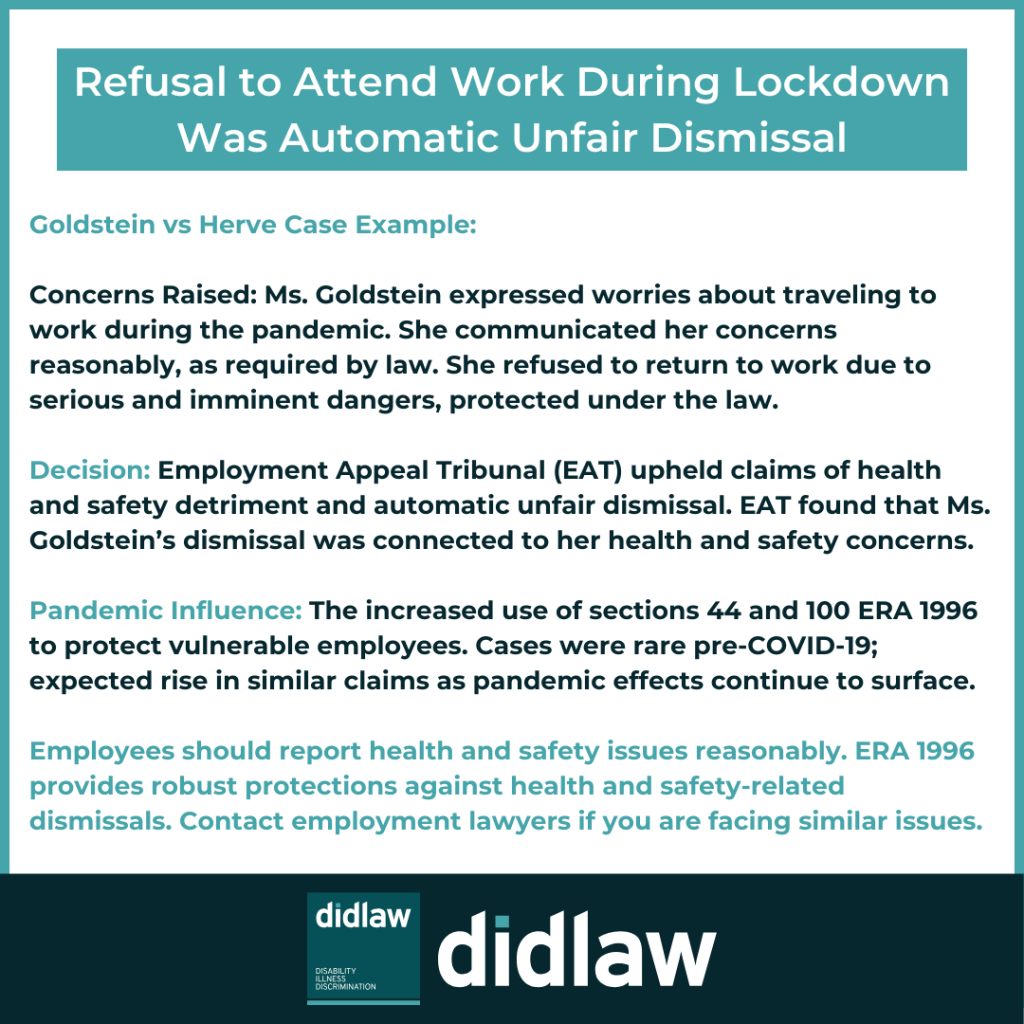
We have started to see decisions from the raft of health and safety cases lodged by disgruntled employees during the Covid-19 pandemic.
The case of Goldstein v Herve is a good example. In this case, the Employment Appeal Tribunal (EAT) held that an Employment Tribunal had been right to uphold claims relating to health and safety detriment and dismissal in breach of the Employment Rights Act 1996 (ERA 1996). The claims had arisen from Ms Goldstein’s concerns about travelling to and from work during the pandemic when she had refused to return to work during the second lockdown.
The EAT considered that the ET had correctly held, when deciding the detriment claims, that Ms Goldstein had brought her work connected concerns to her employer, by reasonable means. She had raised concerns about work circumstances that she believed to be harmful or potentially harmful to her health and safety (section 44(1)(c) ERA 1996).
As a result, Ms Goldstein had refused to return to her place of work during the lockdown because of dangerous conditions which she believed to be both serious and imminent and which she could not reasonably be expected to avoid, section 44(1)(d) ERA 1996. By refusing to return to work Ms Goldstein had taken appropriate steps to protect both herself and others from dangerous circumstances which she believed to be both serious and imminent for the purposes of section 44(1)(e).
In addition to the health and safety claims the EAT also upheld Ms Goldstein’s claim of automatic unfair dismissal, holding that she was dismissed for a reason connected to health and safety, arising under section 100(1)(d).
During the pandemic I am certain that most claimant employment lawyers used either sections 44 or 100 of the ERA 1996 at least once to protect vulnerable employees or those with vulnerable dependents. Claims that relate to detriment/dismissal connected to health and safety concerns were rare prior to Covid-19, something most lawyers would never have had to deal with on a day-to-day basis.
It is interesting to see these judgments coming through the courts. They reflect in another way – legally – on what a highly unusual and difficult time the pandemic was. We are all still feeling the after-effects and will do for some years to come. There will no doubt be more claims to emerge from the system.
This blog was written by Elizabeth McGlone, Partner at didlaw.
